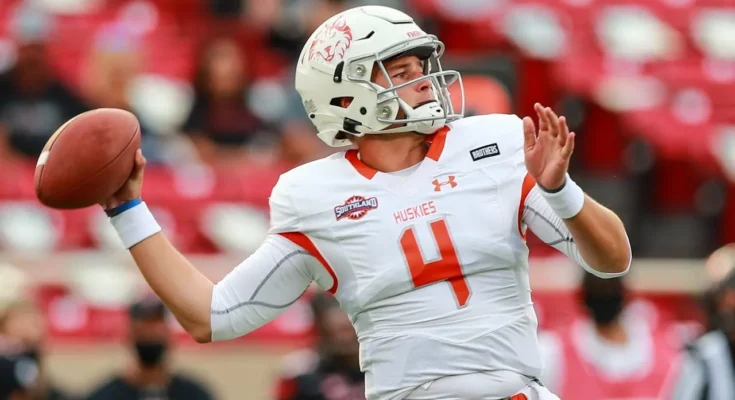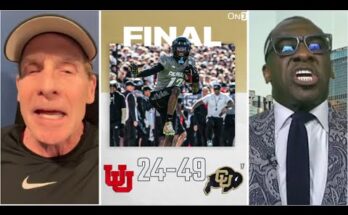The NCAA’s controversial decision to tentatively settle the House, Carter and Hubbard antitrust litigations faces many hurdles.
Just ask Houston Christian University.
The D1 school formerly known as Houston Baptist University, which produced New England Patriots QB Bailey Zappe and Jacksonville Jaguars LB Caleb Johnson, motioned to intervene in the House litigation last Thursday.
The reason: HCU says it wasn’t consulted during the deal-making and argues the terms will “adversely affect” its 2,300 undergraduate students and community.
In a seven-page memorandum to presiding judge Claudia Wilken, HCU accuses “the defendants”—the NCAA and power conferences—of failing to take “any step” to protect the university’s interests. While HCU and other D1 schools would be on the hook to pay part of the settlement’s roughly $2.7 billion tab, neither HCU nor its conference, the Southland, “had a seat at the negotiating table, or had any input into any resolution of this matter, including the proposed settlement.”
HCU’s grievances highlight the problematic roles of the NCAA and power conferences as the defendants and negotiators of a settlement that assigns costs to HCU and other non-defendants.
The NCAA is a membership organization, and whether NCAA rules and procedures authorized the NCAA’s board of governors to approve settlement terms in a case where DI schools aren’t defendants and where most D1 schools aren’t members of defendant conferences could become ingredients for multiple legal disputes. HCU’s brief suggests the school may have been denied adequate notice and opportunity for comment.
As to the power conferences, their interests are often not aligned with smaller conferences. Power conferences enjoy lucrative media rights contracts and feature games played by high-profile and marketable players. Additionally, their schools have the financial wherewithal to adapt to the increasingly pro sports-like world of college sports.
Most of the more than 350 DI schools don’t fit that description. The smaller conferences have comparatively modest media rights deals, and their athletes typically aren’t pro prospects or land lucrative NIL deals.
Expect Wilken to contemplate if most schools impacted by the settlement were not only denied a seat at the table but also saw their interests traded away to plaintiffs’ lawyers to secure a deal.
But it’s not a done deal. The NCAA and power conferences and attorneys for the players continue to negotiate a detailed settlement agreement, called a long-form agreement, that Wilken would review. To date, the parties have only agreed on principal terms.
Of relevance to HCU, the agreement’s principal terms reportedly include non-power conferences and their member schools absorbing about $990 million in costs over a 10-year period. That money would be used to pay athletes—with their attorneys getting a healthy cut—for compensation the players would have earned in NIL prior to the NCAA permitting NIL in 2021, as well as forgone earnings from video games never published and TV money not shared with players.
The settlement also envisions schools being able to opt into a direct, athlete-pay system. Participating schools would share up to 22% of sports revenue stemming from media rights, ticket sales and sponsorships while adhering to an approximately $21 million salary cap. This framework resembles a pro league except the rules won’t be collectively bargained with a union, meaning they could face antitrust challenges by those outside the settlement.
HCU, which says 95% of its students are on financial aid, contends the defendants don’t represent its interests at the bargaining table. The school also grumbles that colleges were presented with the settlement “as a fait accompli, without any regard to the adverse impact to these institutions.”
In what might signal a potential legal claim against the NCAA and power conferences, HCU says the settlement would force the university, officers and trustees to violate “their fiduciary duties” under the law. It’s possible HCU will later seek a restraining order to block implementation of a settlement that would compel school officials to breach duties.
Those duties connect to money.
As HCU sees it, the settlement would “cause the diversion of funds away from the basic academic mission of HCU and other similarly situated institutions at the expense of the core educational functions of educating students and conducting research.” HCU contends it and similarly situated schools shouldn’t be required to pay “damages” for athletes’ NIL and shouldn’t be forced to “divert development efforts away from core academic missions and reallocate funds to athletics programs already deeply in debt.”
There are counterarguments. The NCAA could insist that all D1 schools, who vote on NCAA rules, are responsible for amateurism rules that led to the lawsuits. HCU was part of the NCAA when the allegedly illegal conduct transpired. Moreover, if the NCAA had gone to trial, lost and been ordered to pay billions of dollars in damages, the association would have demanded that member schools contribute their share of the bill. From that lens, the NCAA could insist that even if member schools weren’t named names, they are still parties in the litigation.
If Wilken grants HCU’s motion to intervene, the school will gain a voice in forthcoming settlement hearings and formally object.
Don’t be surprised if other schools join HCU as intervenors. By being first to challenge the NCAA, HCU likely makes it easier for other schools to do the same.
To that point, HCU’s situation is hardly unique. Like most schools in America, HCU must simultaneously worry about higher costs for athletics and the looming “enrollment cliff.” Over the next decade, the college-age population in the United States is expected to drop due to decreased birth rates following the Great Recession. Colleges fear their revenues will fall as they compete for a smaller pool of students, who will gain bargaining leverage to negotiate higher discount rates on tuition and other concessions that reduce revenues. The prospect of athletics costing much more as the enrollment cliff arrives is a frightening combination.
Under Federal Rule of Civil Procedure 23(e)(2), Wilken must determine if the settlement is “fair, reasonable and adequate.” She will consider HCU’s objections, as well as those raised by other schools, conferences or players. Each group might argue the compensation scheme is inadequate or unclarified, and that the settlement process was procedurally flawed or otherwise deficient. If many players opt out of the settlement, Wilken could worry the deal is not representative of the class.
Approval of a settlement is hardly a layup. As Sportico detailed in a discussion on a judge rejecting the Google Book Settlement in 2011, judges can reject settlements for “going too far” in restricting an industry. In a more recent example, the judge overseeing the proposed settlement for UFC fighter pay recently expressed concerns and has demanded more information and explanation. While much of the media coverage of the NCAA antitrust settlement implies it’s a done deal, Wilken, not the NCAA or plaintiffs’ attorneys, is the decider. Given that Wilken has overseen this line of NCAA antitrust litigation over the last 15 years, beginning with Ed O’Bannon’s lawsuit, she has no doubt formed substantive opinions about what would be a fair and appropriate resolution.
Even if Wilken approves the settlement, approval wouldn’t immunize the settlement from further legal scrutiny. Numerous stakeholders could claim standing to challenge it before the U.S. Court Appeals for the Ninth Circuit and eventually the U.S. Supreme Court.
Last Friday, the U.S. Court of Appeals for the Eleventh Circuit reversed and vacated a settlement agreement involving Johnson & Johnson sunscreen products that a U.S. district court judge had approved. Consumers covered by the settlement were set to receive coupons while the attorneys were going to be paid. Attorney Ted Frank of the Hamilton Lincoln Law Institute objected, and the Eleventh Circuit agreed. While the situation presented by In Re: Johnson & Johnson Aerosol Sunscreen Marketing, Sales Practices and Products Liability Litigation features different facts and laws than those presented in the NCAA cases, it illustrates how settlements lack finality until they pass multiple checkpoints.



